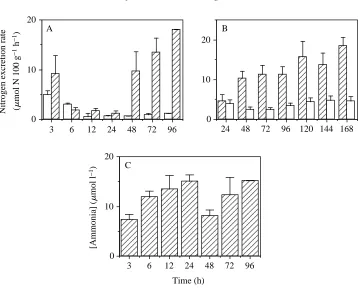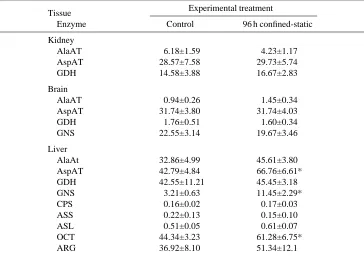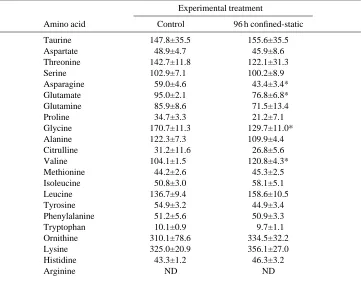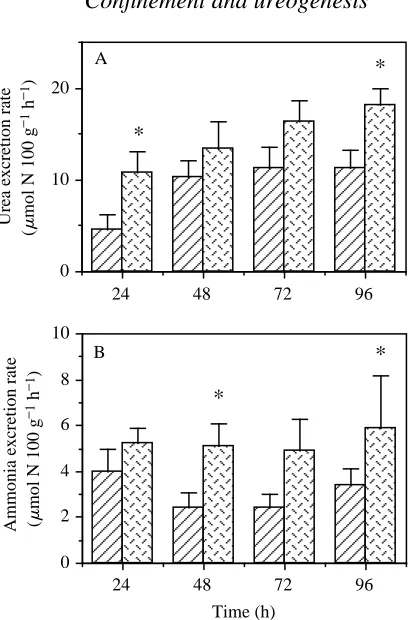EFFECTS OF CONFINEMENT/CROWDING ON UREOGENESIS IN THE GULF TOADFISH OPSANUS BETA
Full text
Figure




Related documents
The effects of crowding and/or feeding on relative mRNA expression of Rhag, Rhbg, Rhcg1 and Rhcg2 in the (A) gill, (B) stomach, (C) intestine and (D) liver of gulf toadfish,
The present investigation clearly demonstrates that the urea pulse events triggered by 5-HT (Wood et al., 2003) are mediated by a 5-HT 2 -like receptor, since urea pulses were
eggs, larvae and juveniles expressed significant levels of the ornithine–urea cycle enzymes carbamoyl-phosphate synthetase III, ornithine transcarbamylase and arginase and the
The possible presence of a urea transporter in the kidney of the gulf toadfish (Opsanus beta) and further characterization of the pulsatile facilitated transporter previously
(A) Rates of oxygen consumption, (B) ammonia excretion and (C) urea excretion versus swimming speed for juvenile rainbow trout fed to satiation (triangles), fed 1 % body mass per
With this in mind, in the present study we examined the relationship between plasma cortisol levels, GNS activity and the form of nitrogen excreted (e.g. urea, ammonia) in
